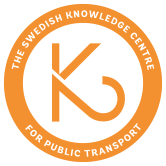The main goal of this thesis is to contribute towards developing a decisionsupport method for transport analysts, planners, or decision-makers who want to evaluate the systemic effect of a DRT service such as costs, emissions and effect on society.
The findings from the simulation experiments indicate that DRT, even in its extreme forms like fully autonomous shared taxis, does not show the level of efficiency that could result in a revolution in transportation — it is hard to compete in efficiency with conventional public transport in urban zones. However, in scenarios with lower demand levels, it could be more efficient to replace conventional buses with a DRT service when considering costs and emissions.
We also show that, when integrated with conventional public transport, DRT could help alleviate the last-mile problem by improving accessibility to long-distance lines. Additionally, if car users are attracted to public transport with the help of DRT, there is a potential to significantly reduce the total level of emissions. The simulation results indicate that the proposed simulation method can be applied for the evaluation of DRT. The implementation of trip planning combining DRT and conventional public transport is a major contribution of this thesis. We show that the integration between services may be important for the efficiency of the service, especially when considering the sustainability aspects.
